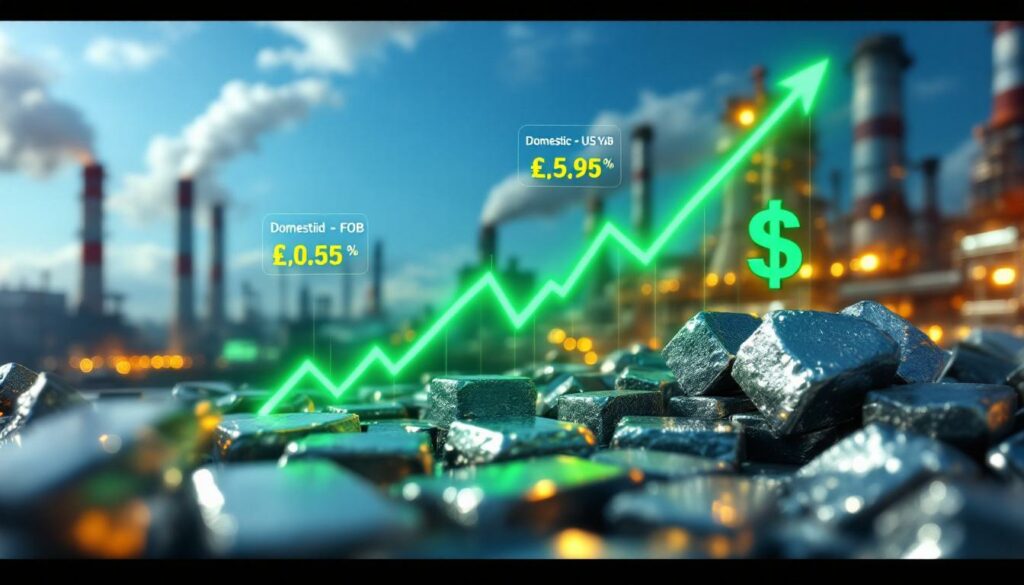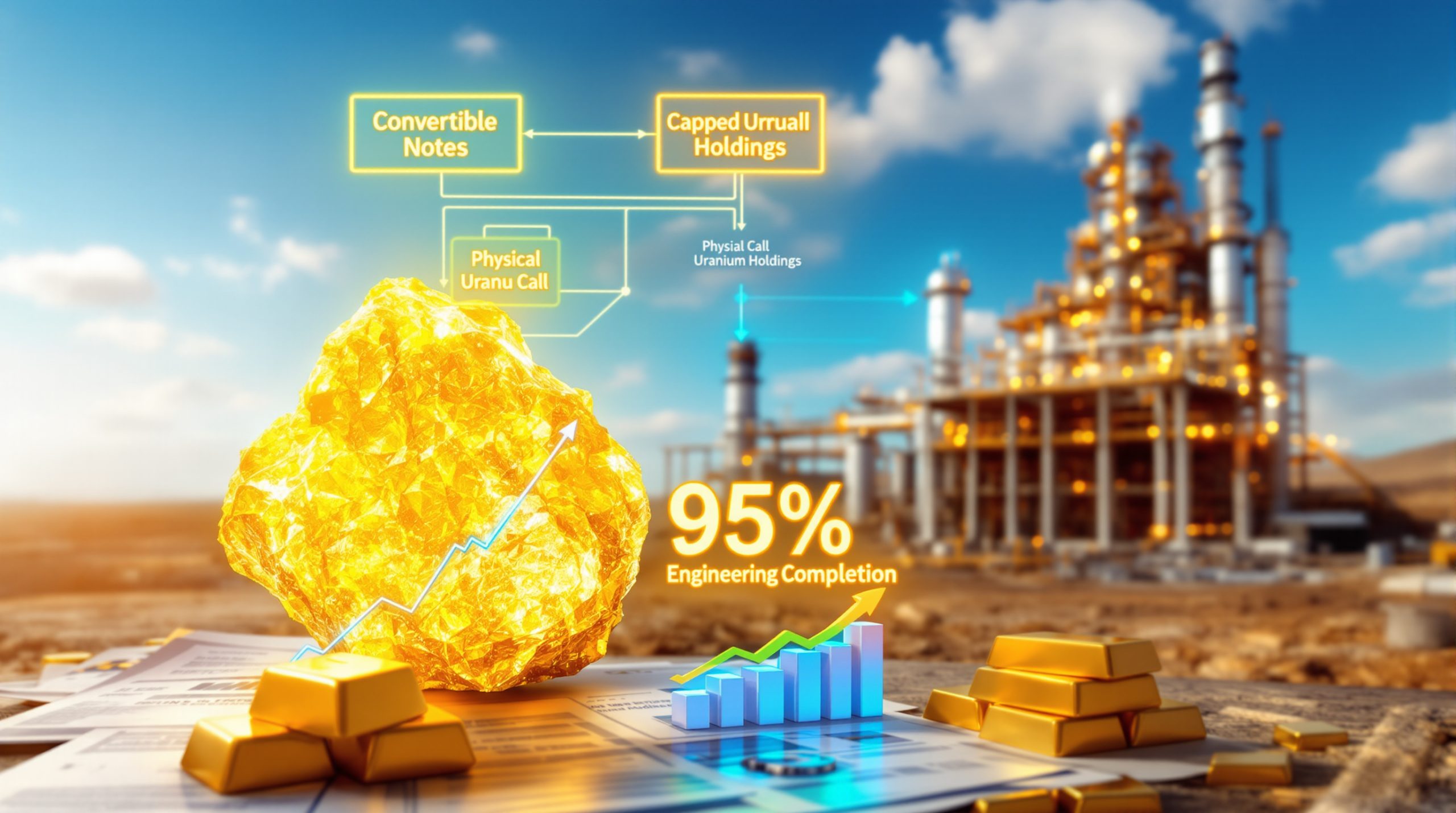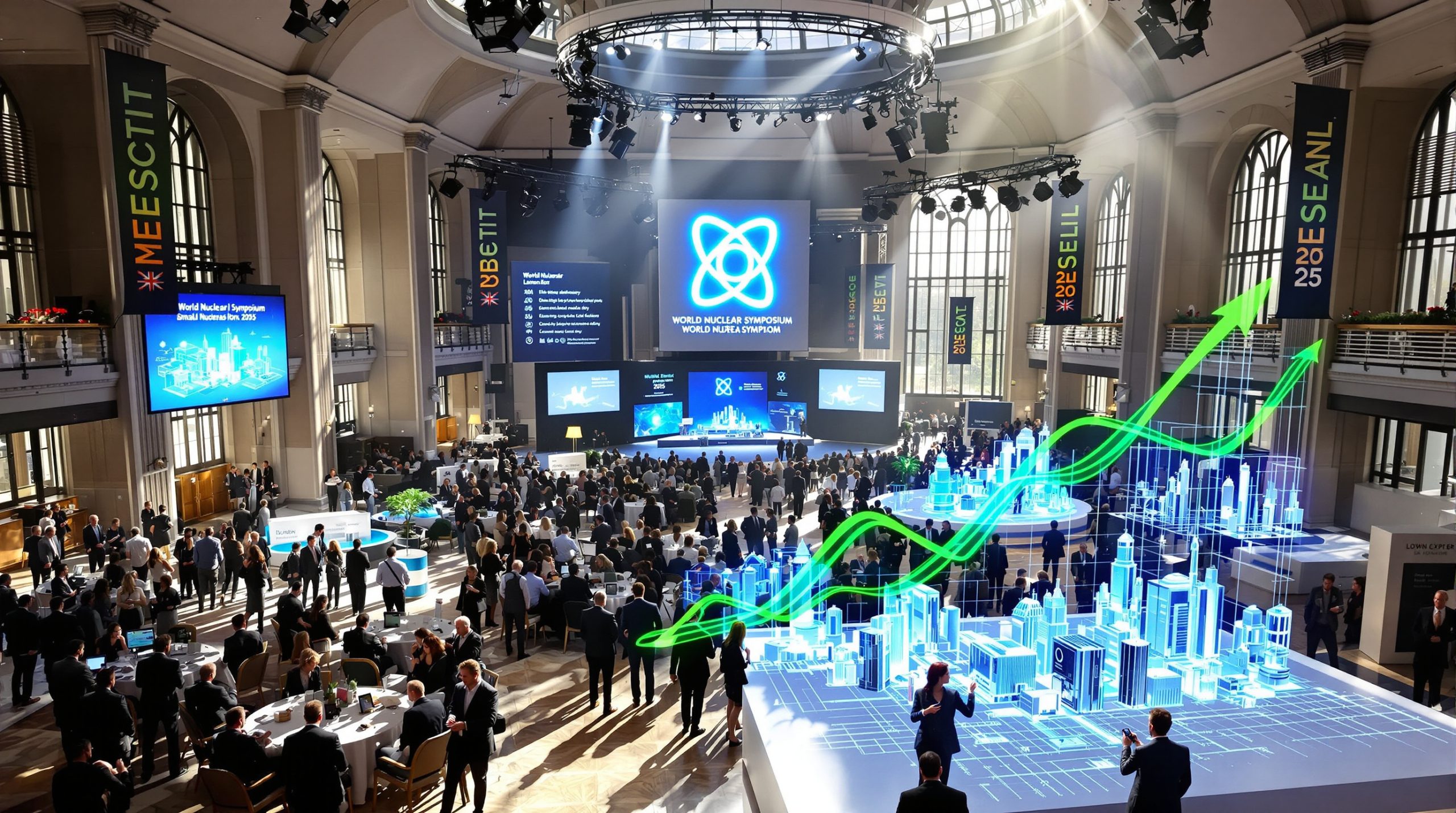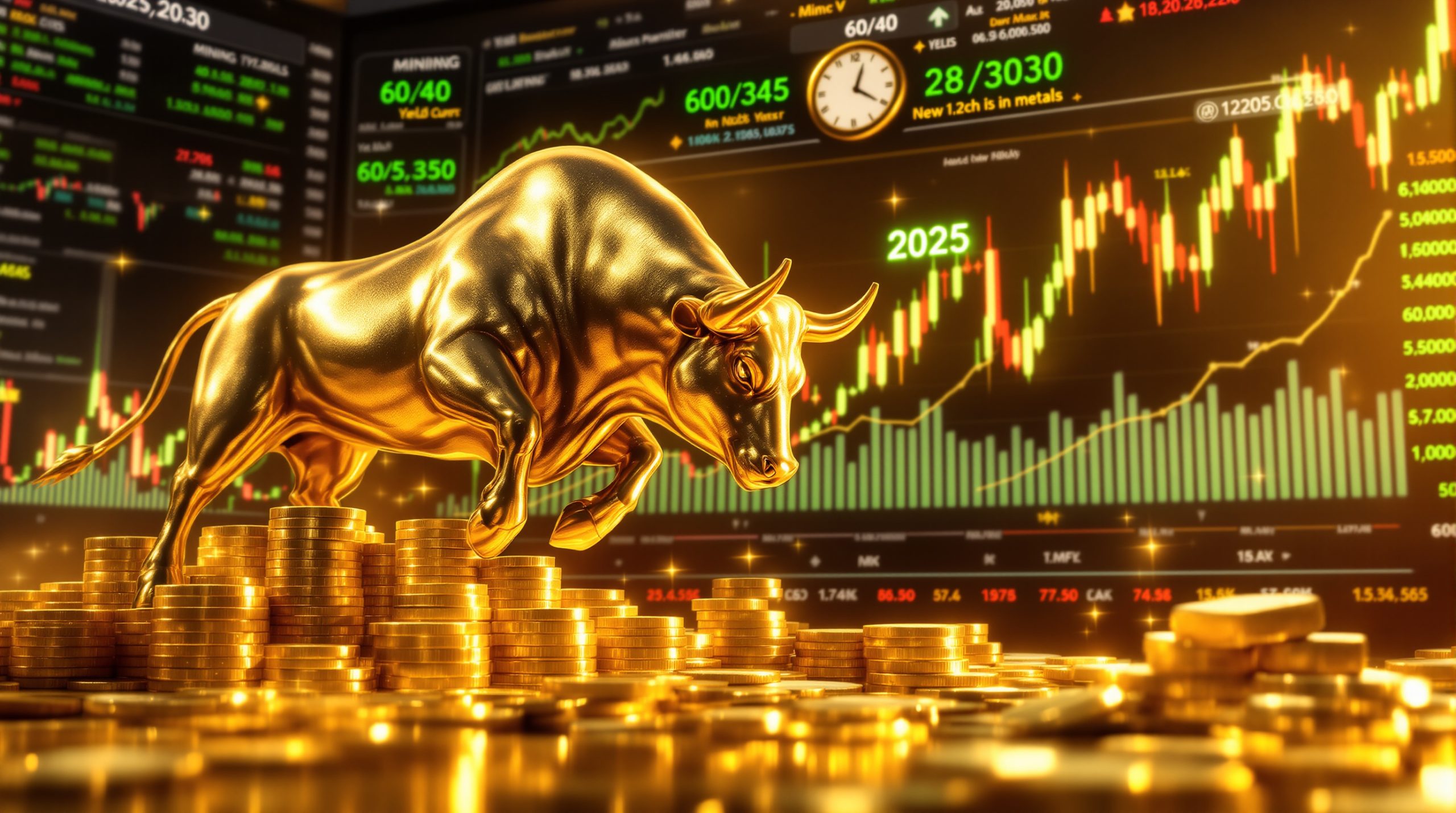What's Happening with Electrolytic Manganese Metal (EMM) Prices?
The electrolytic manganese metal (EMM) market is displaying remarkable resilience in July 2025, with spot prices rising in manganese mills steadily climbing despite challenging broader market conditions. According to the latest Shanghai Metal Market (SMM) data, domestic spot prices in China have reached 13,400-13,600 yuan/mt, representing a week-over-week increase of 100 yuan/mt. Meanwhile, FOB prices have risen to $1,880-$1,920/mt, up $10/mt from the previous week.
This upward trajectory reflects strengthening market fundamentals despite cautious sentiment in downstream sectors. The consistent price growth throughout July demonstrates the underlying supply-demand dynamics supporting EMM valuations in both domestic and international markets.
"The current price resilience indicates a structural shift in the manganese market rather than merely cyclical factors. Supply-side discipline has become more pronounced among major producers," notes a senior SMM market analyst in their July 2025 report.
Current Price Movements in the EMM Market
The EMM market has shown remarkable stability compared to other metal markets experiencing greater volatility. Premium pricing for high-quality EMM products (99.9% purity) has widened to approximately $50-70/mt above standard grades, reflecting specialized demand from high-performance steel and aluminum alloy manufacturers.
Regional price variations are becoming more pronounced, with Chinese domestic prices showing greater momentum than export markets. This divergence stems from differing demand patterns and inventory positions across regions, with Southeast Asian buyers showing more price sensitivity than domestic consumers.
Key price indicators worth monitoring:
- Domestic Chinese spot market: 13,400-13,600 yuan/mt (↑100 yuan/mt WoW)
- FOB China export prices: $1,880-$1,920/mt (↑$10/mt WoW)
- Premium grade (99.9%) differential: $50-70/mt above standard grades
- CIF Rotterdam prices: $2,020-$2,080/mt (relatively stable week-over-week)
Key Market Indicators and Trends
The EMM market's growth trajectory has remained consistent throughout 2025, with particular acceleration in the second quarter. China continues to dominate global EMM production, accounting for over 98% of world output according to the latest USGS Mineral Commodity Summaries. This concentration creates unique market dynamics where Chinese production decisions have immediate global price implications.
One particularly noteworthy trend is the premium pricing commanded by higher-purity EMM products. Materials exceeding 99.8% purity now fetch premiums of up to 6% over standard grades, reflecting growing demand from specialized applications in the automotive and electronics sectors.
Demand patterns show interesting regional variations:
- Chinese domestic consumption: Steady growth driven by infrastructure spending
- European demand: Relatively flat with cautious procurement strategies
- North American consumption: Moderate growth focused on specialty steels
- Southeast Asian demand: Increasing rapidly from a smaller base
The electrolytic process used to produce EMM is highly energy-intensive, requiring approximately 9,000-10,000 kWh per metric ton according to CRU Group's 2024 Manganese Cost Analysis. This energy dependency makes production costs particularly sensitive to electricity price fluctuations, which have been significant in key producing regions.
Why Are Manganese Mills Reluctant to Lower Prices?
Despite cautious purchasing behavior from downstream steel producers, manganese mills have maintained firm price positions throughout July 2025. This reluctance to reduce prices stems from multiple factors creating strong production cost floors.
Supply-Side Factors Driving Price Firmness
The primary driver behind manganese mills' price firmness is the production cost structure. Electricity constitutes 40-50% of EMM production costs according to Wood Mackenzie's 2024 Manganese Cost Curve analysis. With Chinese industrial electricity prices averaging ¥0.68/kWh in Q1 2025 (an 18% year-over-year increase according to National Bureau of Statistics data), producers face significant margin pressure.
Strategic inventory management by major producers has become increasingly sophisticated. Rather than allowing excess production to drive prices down, major EMM producers have implemented coordinated production adjustments to maintain market balance. This approach has effectively created discipline in the market.
"What we're seeing isn't just cost-driven pricing. There's clear evidence of strategic inventory management across the industry. Low-priced material scarcity isn't accidental—it's the result of coordinated inventory pooling strategies," explained a metals sourcing director at Baowu Steel in a May 2025 SMM interview.
Traders have largely aligned with mill pricing strategies, adding only modest markups of $15-30/mt according to SMM's Transaction Database. This alignment has reinforced price stability by reducing competitive undercutting in the market.
Additional factors supporting price firmness include:
- Environmental compliance requirements reducing available production capacity
- Transportation bottlenecks in key mining regions adding logistical premiums
- Raw material grade deterioration increasing processing costs
- Labor cost inflation in primary production regions
Production Economics Influencing Mill Decisions
The complex production economics of EMM manufacturing play a crucial role in price setting. The typical cost structure for Chinese EMM production breaks down approximately as:
| Cost Component | Percentage of Total | Recent Trend |
|---|---|---|
| Electricity | 40-50% | ↑ (18% YoY) |
| Manganese ore | 25-30% | ↑ (7% YoY) |
| Environmental compliance | 15% | ↑ (new standards) |
| Labor | 5-7% | ↑ (wage inflation) |
| Other costs | 3-5% | ↑ (inflation) |
A significant development affecting production economics has been the implementation of stricter environmental regulations. In January 2025, multiple EMM plants in Guangxi province were closed due to emission non-compliance, removing approximately 20,000 metric tons of monthly supply according to the Ministry of Industry and Information Technology's Production Bulletin.
Energy costs represent the most volatile component of production expenses. Hydropower-dependent plants in Guizhou and Yunnan provinces have faced seasonal electricity tariff adjustments, while coal-powered facilities contend with China's evolving carbon reduction policies.
"The minimum sustainable production price for EMM is now approximately $1,750-1,800/mt FOB China. Below this threshold, a significant portion of industry capacity would operate at a loss," notes SMM's 2025 Mill Economics Survey.
Labor costs have also climbed steadily, with wage inflation in key mining regions outpacing national averages. This trend reflects both general economic conditions and the increasing technical skill requirements for modern EMM production facilities.
How Are Steel Producers Responding to Higher EMM Prices?
The steel industry's response to elevated EMM prices has been measured and strategic, balancing immediate cost concerns against longer-term supply security considerations. According to the SMM EMM Weekly Review from July 11, 2025, "downstream steel mills were cautious about purchasing high-priced EMM and mostly adopted a wait-and-see attitude."
Downstream Market Reactions
Steel producers have implemented several tactical approaches to manage higher EMM costs. Many have adopted cautious purchasing patterns, limiting spot market acquisitions to essential production needs while drawing down existing inventories. This behavior is particularly evident among mid-sized steel producers with less robust supply chain arrangements.
Evidence from SMM's Trader Survey (Q2 2025) indicates significant inventory drawdowns at major producers including POSCO and Nippon Steel. This strategy allows manufacturers to defer purchases while waiting for potential price corrections, though it carries increased supply disruption risks.
Some manufacturers have explored alternative material formulations where specifications permit. This approach has limitations, however, as Dr. Elena Rossi from MIT Materials Science Lab explains:
"At prices exceeding $1,900/mt, mills have incentives to reformulate AISI 200-series stainless steel with partial nitrogen substitution where possible—but aerospace, energy, and automotive grades remain fundamentally EMM-dependent due to their critical performance requirements."
Steel producer responses include:
- Reducing spot market purchases while maintaining contract deliveries
- Drawdown of strategic inventories (particularly in Japan and South Korea)
- Exploration of alternative manganese sources (ferromanganese, silicomanganese)
- Reformulation of less critical steel grades to reduce manganese content
- Price negotiation leverage using volume commitments
The most adaptive producers have implemented sophisticated hedging strategies, using a combination of long-term contracts and strategic inventory management to mitigate price volatility exposure.
Steel Industry Demand Patterns
Global stainless steel production reached 58.5 million metric tons from January through May 2025 according to the International Stainless Steel Forum's Preliminary Report. This sector drives approximately 70% of EMM demand, making it the critical demand indicator for market participants.
Seasonal variations in steel production continue to influence EMM consumption patterns. Traditional summer slowdowns in construction activity typically reduce demand in July-August, though this pattern has been less pronounced in 2025 due to production catch-up efforts following earlier supply chain disruptions.
Regional differences in steel manufacturing activity have become more pronounced:
| Region | Steel Production Trend | EMM Demand Implication |
|---|---|---|
| China | Moderate growth (3-4% YoY) | Steady demand increase |
| Europe | Slight contraction (-1% YoY) | Reduced spot purchasing |
| North America | Stable (0-1% YoY) | Consistent contract volumes |
| Southeast Asia | Strong growth (7-8% YoY) | Increasing import demand |
| India | Rapid expansion (10%+ YoY) | Growing spot market activity |
The specialty steel segment has maintained relatively consistent EMM requirements despite price increases. This resilience reflects the limited substitution possibilities in high-performance applications like duplex stainless steels, tool steels, and advanced high-strength automotive steels.
The automotive sector continues to provide demand stability despite broader economic uncertainties. The industry's shift toward lightweight, high-strength materials has increased the manganese intensity per vehicle, partially offsetting any production volume fluctuations.
What Are the Market Dynamics Between Producers and Traders?
The relationship between EMM producers and traders represents a critical component of market functioning, influencing price discovery, inventory management, and market liquidity. Current dynamics reflect both structural and cyclical factors shaping trader behavior.
Trading Patterns and Strategies
According to the SMM Weekly EMM Review (July 11, 2025), "traders mostly followed the manganese plants with slight increases" in their pricing. This alignment reflects the current balance of power between producers and intermediaries, with limited opportunities for price arbitrage.
Trader markup ranges typically fall between $15-30/mt over mill prices according to SMM's Transaction Database. This relatively narrow spread indicates competitive trading conditions and suggests that value-added services (financing, logistics, blending) rather than pure price speculation drive trader economics.
"The traditional arbitrage windows have effectively closed since FOB-China prices diverged beyond $40/mt from EU CIF levels. Physical traders now prioritize supply chain financing over speculation," explained a metals trader from Traxys during SMM's June 2025 industry roundtable.
The typical trader profit model has evolved significantly from pre-pandemic norms:
- Physical spread: Now typically 1.2-2.1% (down from 3-4% historically)
- Financing yield: 4-6% annualized according to DBS Bank's Commodity Trade Finance Study (2024)
- Value-added services: Growing component including blending, warehousing, and technical consulting
Speculative trading activity has diminished noticeably compared to previous years. This shift reflects both tighter financing conditions and increased market transparency that has reduced information asymmetries that previously created trading opportunities.
Supply Chain Relationships
Long-term contract negotiations increasingly reflect market expectations for sustained price stability. Approximately 60-70% of Q3 2025 volumes have been fixed at $1,850-1,900/mt according to SMM's Contract Analysis, indicating confidence in current price levels.
Quality premium considerations have become increasingly important in buyer-seller relationships. High-reliability suppliers with consistent product specifications command premiums of 2-3% over market averages, reflecting the downstream cost implications of quality variations.
The 2024 trade finance defaults involving several smaller metal traders prompted significant changes in payment security mechanisms. Current standard terms typically include:
- Increased letter of credit collateral requirements (20% for EMM shipments per ICBC policy)
- Shorter payment terms (30-45 days versus previous 60-90 day standards)
- Enhanced quality certification requirements
- More stringent counterparty risk assessments
Information sharing dynamics between market participants have evolved with technology. WeChat groups and specialized industry platforms now facilitate rapid price discovery and supply disruption alerts, reducing information asymmetries that previously advantaged certain traders.
"We're seeing stronger partnerships between reliable suppliers and strategic buyers. The era of purely transactional relationships is giving way to deeper supply chain integration," notes SMM's Supply Chain Relationship Survey (Q1 2025).
What's the Outlook for EMM Prices in Coming Weeks?
The forward outlook for EMM prices reflects a complex interplay of supply-side discipline, demand uncertainty, and macroeconomic factors. Based on current market conditions and historical patterns, several projections can be made about near-term price movements.
Short-Term Market Projections
Market analysts generally anticipate continued price stability with the potential for modest increases in the coming weeks. The current supply-demand balance appears supportive of existing price levels, with limited downside risk barring significant macroeconomic shocks.
The World Steel Association's Short Range Outlook (April 2025) projects global steel demand to grow by 2.5% in 2025. This forecast supports expectations for steady EMM consumption, particularly in developing economies where infrastructure development continues to drive steel demand.
Seasonal factors may exert some influence on near-term pricing. The traditional summer slowdown in Northern Hemisphere construction activity typically creates softening demand during July-August, though this pattern has been less pronounced in recent years.
Price projection scenarios for August-September 2025:
| Scenario | Probability | FOB China Price Range | Key Drivers |
|---|---|---|---|
| Base case | 60% | $1,870-1,950/mt | Stable demand, steady production costs |
| Bullish case | 25% | $1,950-2,050/mt | Energy cost spikes, production disruptions |
| Bearish case | 15% | $1,800-1,870/mt | Demand slowdown, improved ore availability |
Regional variations in price movement expectations are notable. Asian markets may see greater price strength due to infrastructure spending initiatives, while European demand faces headwinds from ongoing manufacturing sector challenges.
"We expect the pricing environment to remain supportive through Q3, with potential for modest strengthening in September as seasonal buying patterns resume. The primary limiting factor will be downstream affordability thresholds rather than supply constraints," according to SMM's latest Monthly Price Outlook.
Factors to Monitor for Price Direction
Several key indicators warrant close attention for those tracking future EMM price movements. Steel production schedules and forecasts provide the most direct demand signal, particularly for specialized grades requiring high-purity manganese inputs.
Energy cost trajectories represent the most significant variable cost component. Recent thermal coal price increases in China and seasonal hydropower fluctuations both merit monitoring for their impact on EMM production economics.
Raw material price movements, particularly for manganese ore, directly influence EMM production costs. The spread between 44% and 37% manganese ore grades has widened in 2025, creating cost advantages for producers with access to higher-grade resources.
Critical monitoring indicators include:
- Chinese domestic electricity prices, particularly in Guangxi and Guizhou provinces
- Port inventory levels of manganese ore (Tianjin and Qinzhou terminals)
- Capacity utilization rates among major EMM producers
- Steel mill order books, especially for manganese-intensive grades
- Shipping container rates on Asia-Europe and Asia-North America routes
Policy changes affecting production or international trade could quickly shift market dynamics. Particular attention should focus on China's environmental enforcement actions, which have previously caused sudden supply disruptions when targeting non-compliant producers.
How Does EMM Pricing Compare to Other Metals?
Comparing EMM price patterns with other industrial metals provides valuable context for understanding its market dynamics and potential future movements. EMM has demonstrated distinctive characteristics in terms of price stability, correlation with other metals, and response to broader economic factors.
Comparative Market Analysis
EMM price stability has been notably higher than many other industrial metals in 2025. While nickel has experienced price swings exceeding 25% and copper has fluctuated within a 15% range, EMM prices have maintained a relatively narrow trading band of approximately 7-8%.
According to London Metal Exchange (LME) data, the 3-month nickel contract settled at approximately $19,500/mt in early July 2025, representing significantly higher volatility than EMM's steady upward trajectory. This contrast reflects the different market structures, with EMM lacking the speculative futures trading that influences LME-traded metals.
Correlation with stainless steel production indicators remains strong. EMM prices have shown an 85% correlation with the ISSF's global stainless production index, significantly higher than correlations with general economic indicators like industrial production (68%) or GDP growth (53%).
When examining [copper price insights](https://discoveryalert.com.au/news/copper-price-record-prediction-kostas-bintas
Want to Spot the Next Major Mineral Discovery Before the Market?
Discover how early investors in ASX mineral discoveries can realise substantial returns by exploring Discovery Alert's dedicated discoveries page. With real-time ASX announcement scanning powered by our proprietary Discovery IQ model, you'll receive immediate notifications on significant discoveries, positioning you ahead of the market. Start your 30-day free trial today at https://discoveryalert.com.au/discoveries/.




